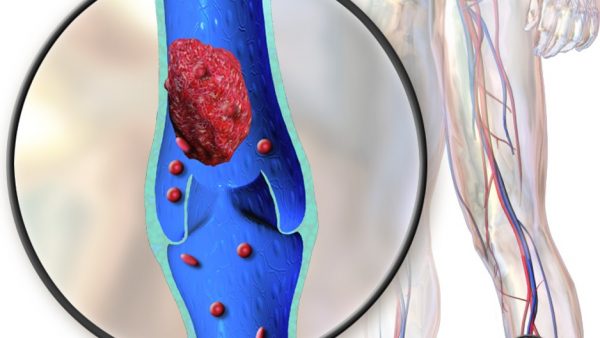
How To Prevent Deep Vein Thrombosis
Deep Vein Thrombosis is a condition that is a formation of a blood clot in a deep vein. These blood clots develop in the lower leg, pelvis, or thigh. It can also form in the arm. Deep Vein thrombosis (DVT) can happen to anybody resulting in disability, serious illness and if not treated, it can be fatal.
Is DVT is preventable? The answer is yes if it is diagnosed early and is treatable. In some people, serious pain will lead to the discovery of DVT.
There are two types of blood clots that affect the body depending on the location and type of blood clot:
- DVT: A blood clot that develops in the leg, arm, the pelvis is known as deep vein thrombosis (DVT). This type of blood clot does not cause a heart attack or stroke.
- Arterial thrombosis: A blood clot in an artery, usually in the heart or brain- This type of blood clot can cause a heart attack or stroke.
Symptoms, causes, and complications of DVT:
Symptoms of DVT: In the initial stages most common symptoms of DVT are:
- Swelling in the legs
- Pain
- Redness in the skin
- Tenderness
- Warmth and pain around the affected skin
- The dark color of the skin
- Skin warmth to touch
- Bulging twisted veins
Following is a list of factors that increase the risk of developing DVT (CDC):
Following is a list of factors that increase the risk of developing DVT (CDC):
Injury to a vein, often caused by:
- Fractures
- Severe muscle injury
- Major surgery (involving the abdomen, pelvis, hip, or legs)
Slow blood flow, often caused by:
- Confinement to bed (due to a medical condition or surgery)
- Limited movement (like cast on a leg to help heal an injured bone)
- Sitting for a long time, especially with crossed legs; or Paralysis.
Increased estrogen, often caused by:
- Birth control pills
- Hormone replacement therapy, sometimes used after menopause
- Pregnancy, for up to 3 months after giving birth
Certain chronic medical illnesses, such as:
- Heart disease
- Lung disease
- Cancer and its treatment
- Inflammatory bowel disease -Crohn’s disease or ulcerative colitis
Other factors that increase the risk of DVT include:
- Previous DVT
- Family history of DVT
- Aging
- Obesity
- A catheter located in a central vein
- Inherited clotting disorders
- Varicose vein
Prevention of DVT: Move around as much as possible if you are confined to bed after surgery or illness. Seek someone’s’ assistance to move if you must. If you’re at risk for DVT, talk to your doctor about:
1.Graduated compression stockings or medical compression stockings.
2.Any medication like anticoagulants.
3.If you are traveling and sitting more than four hours then-
4.Get up and walk around every few hours so that your legs won’t swell
5.Exercise your legs in sitting position- raise and lower heels, move toes, tighten and release leg muscles.
6.While traveling wear loose-fitting clothes.
7.Maintain healthy weight, avoid sedentary lifestyle. Practice going for walk and reduce strain on legs
8.Drink enough fluids. Staying hydrated is one of the key factors to prevent DVT
Staying healthy, active, and improving lifestyle is key to prevent DVT. Dealing with DVT is difficult and it needs proper attention and good care. Consult a vascular specialist if you are experiencing symptoms of DVT and plan on going through treatment. This will reduce complications and serious sickness that one could experience due to DVT.
References:
https://emedicine.medscape.com/
Image credit: https://commons.wikimedia.org/wiki/File:Blausen_0290_DeepVeinThrombosis.png
Attribution: BruceBlaus “Medical gallery of Blausen Medical 2014”. WikiJournal of Medicine 1 (2). DOI:10.15347/wjm/2014.010. ISSN 2002-4436., CC BY 3.0 <https://creativecommons.org/licenses/by/3.0>, via Wikimedia Commons
Author: Sumana Rao | Posted on: November 3, 2020
« These poses can help to relieve sciatica pain Benign prostatic hyperplasia (BPH) in men- symptoms & prevention »






















Write a comment